Do you have a question about the Panasonic TH-32LRU30 and is the answer not in the manual?
Important safety instructions for operating the television safely and preventing hazards.
Guidelines for secure ventilation and electrical safety, including grounding and power cord usage.
Information on FCC rules, compliance, and declarations for digital devices.
Notices concerning child safety and recommendations for safely mounting the flat panel display.
Lists available accessories like remote control, batteries, and optional wall brackets.
Step-by-step guide for correctly installing batteries into the remote control.
Instructions for assembling the TV pedestal and connecting cables to various terminals.
Guidance on selecting a viewing location to ensure good ventilation and avoid reflections.
Instructions on how to adjust the TV stand angle for preferred viewing positions.
Identifies connection ports located on the side panel of the TV for external devices.
Identifies connection ports located on the back panel of the TV for various inputs.
Guide on connecting VHF/UHF antennas and cable TV services for signal reception.
Instructions for connecting external devices using HDMI and Component video cables for high-quality output.
Details on connecting devices via Composite, Audio Out, DATA/MTI, Serial, and PC terminals.
Overview of buttons, sensors, and indicators on the front of the TV unit.
Explanation of each button and its operation on the television's remote control.
Steps to turn the TV on/off and select channels using the remote or TV buttons.
Description of features like SAP audio, closed caption, and aspect ratio adjustments.
How to select and switch between different external input sources for viewing connected equipment.
Steps to connect a personal computer and display its screen on the TV.
Settings for optimizing the picture when connected to a PC, including sync and position controls.
Instructions for safely inserting and removing SD cards for media viewing purposes.
How to select photos from an SD card and view them in single or slideshow formats.
Steps to display and navigate the TV's main menu hierarchy.
Guidance on selecting menu items and adjusting settings like picture mode and back light.
Detailed settings for picture modes, contrast, color, audio bass, treble, and volume adjustments.
Configuration options for timer, lock, setup, and energy-saving modes like power save.
Guide to accessing and configuring the program lock feature using a password.
Explanation of U.S. rating systems for locking content based on age appropriateness and content.
Steps to access and navigate the channel setup menu for antenna and cable connections.
Procedures for performing automatic channel scanning and manual channel programming.
Details on editing channel identifiers, adding/skipping channels, and checking signal strength.
How to enable, disable, and customize closed caption display for analog and digital broadcasts.
Steps to assign custom names to input terminals for easier identification during input selection.
Options to control audio output from specific input terminals, including stopping output.
How to access and use the guest menu for basic settings like screen format, audio mode, and lock.
Detailed list of U.S. movie and TV ratings and their content descriptions for parental locking.
Explanation of different aspect ratio settings like FULL, JUST, H-FILL, ZOOM, and 4:3 for image display.
Information on supported JPEG formats, file naming conventions, and folder structure for SD cards.
Guidelines for safely inserting, removing, and handling SD cards to prevent data loss or damage.
Details on HDMI interface, HDCP compatibility, and digital audio output terminals for home theater setup.
Table of compatible horizontal and vertical frequencies for PC input signals and PC terminal pinout.
Troubleshooting tips for common picture problems like noise, distortion, and sound issues.
Solutions for remote control malfunctions, delayed recording start, and HDMI connection issues.
Guidance on resolving screen display problems like dark spots or no image, and sound-related issues.
Explanations for normal sounds from the cabinet and unit heating, with ventilation advice.
Instructions for gently cleaning the display panel and the TV cabinet surfaces using appropriate materials.
Guidelines for cleaning the TV pedestal and maintaining the power cord plug for safety.
Comprehensive table detailing specifications for different models including dimensions, power consumption, and connectivity.
Details on the limited warranty coverage, duration, exclusions, and how to obtain service.
Important safety instructions for operating the television safely and preventing hazards.
Guidelines for secure ventilation and electrical safety, including grounding and power cord usage.
Information on FCC rules, compliance, and declarations for digital devices.
Notices concerning child safety and recommendations for safely mounting the flat panel display.
Lists available accessories like remote control, batteries, and optional wall brackets.
Step-by-step guide for correctly installing batteries into the remote control.
Instructions for assembling the TV pedestal and connecting cables to various terminals.
Guidance on selecting a viewing location to ensure good ventilation and avoid reflections.
Instructions on how to adjust the TV stand angle for preferred viewing positions.
Identifies connection ports located on the side panel of the TV for external devices.
Identifies connection ports located on the back panel of the TV for various inputs.
Guide on connecting VHF/UHF antennas and cable TV services for signal reception.
Instructions for connecting external devices using HDMI and Component video cables for high-quality output.
Details on connecting devices via Composite, Audio Out, DATA/MTI, Serial, and PC terminals.
Overview of buttons, sensors, and indicators on the front of the TV unit.
Explanation of each button and its operation on the television's remote control.
Steps to turn the TV on/off and select channels using the remote or TV buttons.
Description of features like SAP audio, closed caption, and aspect ratio adjustments.
How to select and switch between different external input sources for viewing connected equipment.
Steps to connect a personal computer and display its screen on the TV.
Settings for optimizing the picture when connected to a PC, including sync and position controls.
Instructions for safely inserting and removing SD cards for media viewing purposes.
How to select photos from an SD card and view them in single or slideshow formats.
Steps to display and navigate the TV's main menu hierarchy.
Guidance on selecting menu items and adjusting settings like picture mode and back light.
Detailed settings for picture modes, contrast, color, audio bass, treble, and volume adjustments.
Configuration options for timer, lock, setup, and energy-saving modes like power save.
Guide to accessing and configuring the program lock feature using a password.
Explanation of U.S. rating systems for locking content based on age appropriateness and content.
Steps to access and navigate the channel setup menu for antenna and cable connections.
Procedures for performing automatic channel scanning and manual channel programming.
Details on editing channel identifiers, adding/skipping channels, and checking signal strength.
How to enable, disable, and customize closed caption display for analog and digital broadcasts.
Steps to assign custom names to input terminals for easier identification during input selection.
Options to control audio output from specific input terminals, including stopping output.
How to access and use the guest menu for basic settings like screen format, audio mode, and lock.
Detailed list of U.S. movie and TV ratings and their content descriptions for parental locking.
Explanation of different aspect ratio settings like FULL, JUST, H-FILL, ZOOM, and 4:3 for image display.
Information on supported JPEG formats, file naming conventions, and folder structure for SD cards.
Guidelines for safely inserting, removing, and handling SD cards to prevent data loss or damage.
Details on HDMI interface, HDCP compatibility, and digital audio output terminals for home theater setup.
Table of compatible horizontal and vertical frequencies for PC input signals and PC terminal pinout.
Troubleshooting tips for common picture problems like noise, distortion, and sound issues.
Solutions for remote control malfunctions, delayed recording start, and HDMI connection issues.
Guidance on resolving screen display problems like dark spots or no image, and sound-related issues.
Explanations for normal sounds from the cabinet and unit heating, with ventilation advice.
Instructions for gently cleaning the display panel and the TV cabinet surfaces using appropriate materials.
Guidelines for cleaning the TV pedestal and maintaining the power cord plug for safety.
Comprehensive table detailing specifications for different models including dimensions, power consumption, and connectivity.
Details on the limited warranty coverage, duration, exclusions, and how to obtain service.
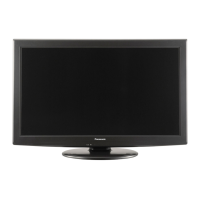
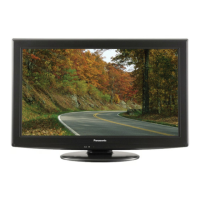
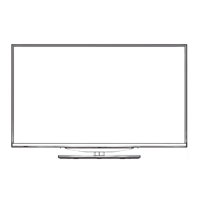
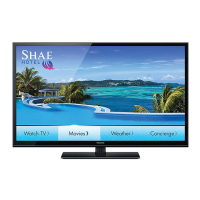
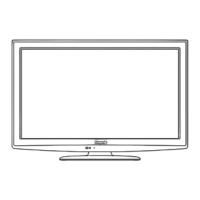

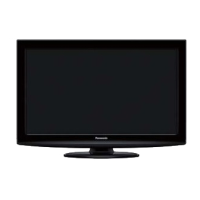


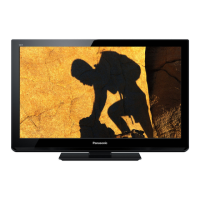
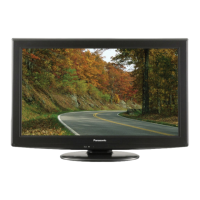

